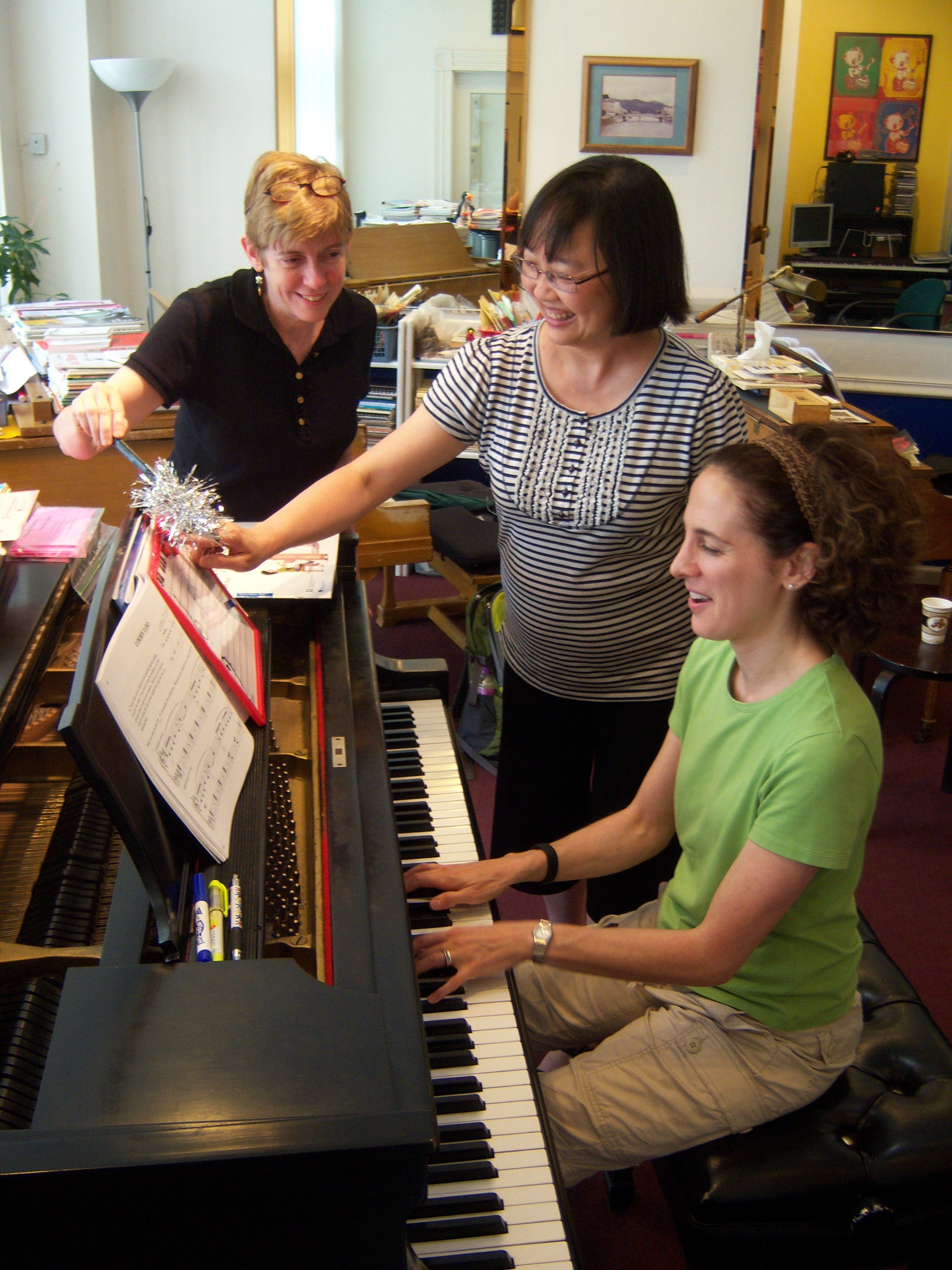One of the things I love most about summer is introducing teachers to the creative and far reaching ideas included in the Robert Pace materials, and the fun of working together, sharing ideas.
Narjes Soliman, director of DaffodilMusicStudio.com and Charapin Pongtornpipat, member of Chicago Area Music Teachers Association, participated in this summer’s Comprehensive Musicianship Teacher Training Seminars at The Lake Shore Music Studio, and received certification in Music for Moppets (pre-school) and Level I Robert Pace curriculum from the International Piano Teaching Foundation.
Julie Lovison waves the “magic wand” to turn white keys to black, and black to white, as Charapin Pongtornipat changes the D 5 finger pattern to Db on the magnet board (E-ZNotes.com), and Narjes Soliman finds the keys on the piano. Studying D and Db as opposite patterns helps in memorizing the scales.
This Magic Wand was hastily created from electricians tape wrapped around a rod, and fancy wrapping ribbon, but one could be found easily at Halloween time. The magic wand creates a playful element that makes learning fundamentals more FUN.
In this example, everyone in the group has a role to play, which rotates so students get a turn to experience from different learning perspectives (tactile and visual), and help check each other as well.
Students in the Pace approach learn to transpose to all 12 five finger patterns in the early levels of study.
Stay tuned for next summer’s schedule of teacher training seminars at LSMS.
